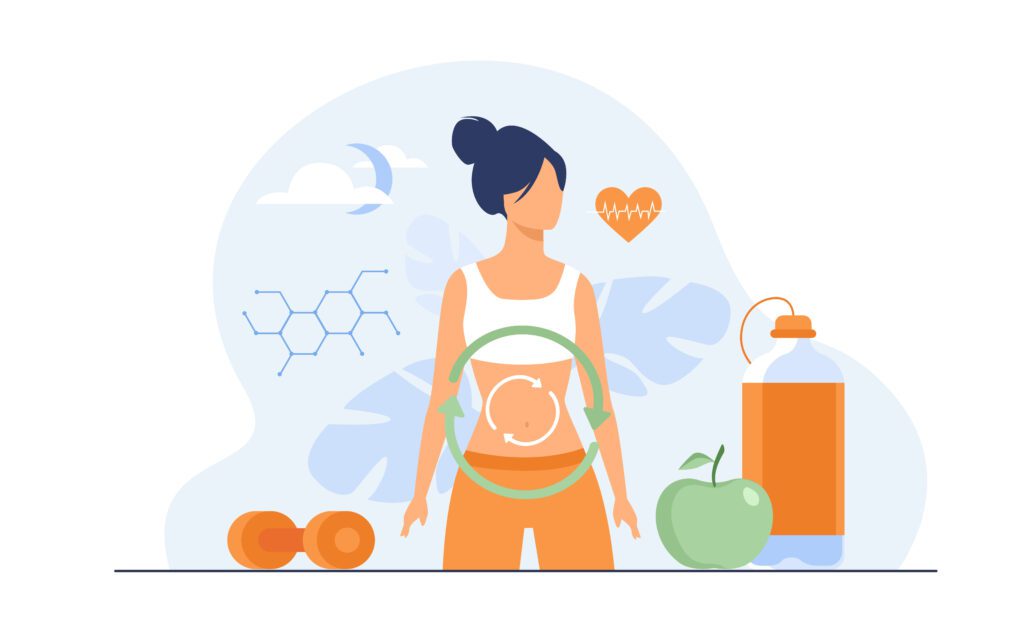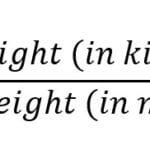Maximizing Your Fitness: The Science of Calorie Burning Through Exercise
Understanding how working out affects calorie burning is crucial for anyone looking to improve their fitness or lose weight. The “Calories Burned by Exercise Calculator” is a useful tool for estimating how many calories you burn during different types of physical activity. In this article, we’ll explore the science behind energy burning, the benefits of regular activity, and tips on how to stay fit and healthy through physical activity.
Calorie Burned by Exercise Calculator
Common Questions about Workouts –
More Than just a Workout Calculator!
Track your progress not just for Physical Activities but Food Consumed, Sleep and Reach your weight loss goals, healthy eating habits for free.
How Exercise Burns Calories?
Exercise increases the body’s energy expenditure, resulting in calorie burning. The number of calories burned depends on various factors such as the type of exercise, its intensity, duration, and the individual’s weight and metabolism.
What is MET?
MET, or Metabolic Equivalent of Task, is a unit that estimates the energy expenditure of physical activities. It compares the metabolic rate during an activity to the resting metabolic rate. A MET score of 1 represents the energy expended at rest. Activities with higher MET scores burn more calories.
How to Calculate Calories Burned?
Below you will see a formula for calories burned. This calculation provides an estimate of the total calories burned based on the MET score of the activity, the individual’s body weight, and the duration of the exercise. We used this for our Workout Caluculator

Benefits of Regular Exercise
Engaging in regular physical activity offers numerous health benefits beyond just burning calories. Here are some key advantages:
- Improved Cardiovascular Health
Regular efforts strengthens the heart and improves circulation, reducing the risk of cardiovascular diseases such as heart attacks, stroke, and high blood pressure. Read more about CSH here - Weight Management
Training helps maintain a healthy weight by burning calories and reducing body fat. It also boosts metabolism, making it easier to manage weight over time. - Enhanced Mental Health
Physical activity is linked to improved mental health and reduced symptoms of depression and anxiety. Exercise releases endorphins, which elevate mood and reduce stress. - Stronger Muscles and Bones
Weight-bearing exercises, such as strength training and running, increase bone density and muscle strength, reducing the risk of osteoporosis and fractures. - Increased Longevity
Research shows that regular workout is associated with a longer lifespan. It helps prevent chronic diseases, maintains physical function, and promotes overall well-being. Find your Fitness Age here

Types of Exercises
Different types of exercises offer distinct benefits and can be tailored to meet specific fitness goals.
- Strength Training
Strength training exercises, including weightlifting and resistance band workouts, build muscle mass and increase metabolic rate. These exercises are essential for maintaining muscle strength and improving body composition. - Cardiovascular Exercise
Cardio activities, such as running, cycling, and swimming, are effective for improving heart health and burning calories. They increase endurance and can be easily adjusted in intensity to suit different fitness levels. - Flexibility and Balance
Activities like yoga and tai chi enhance flexibility, balance, and coordination. They help prevent injuries, improve posture, and promote relaxation. - High-Intensity Interval Training (HIIT)
HIIT involves short bursts of intense exercion followed by rest or low-intensity periods. It efficiently burns calories and improves cardiovascular fitness in a shorter amount of time. - Low-Impact Exercises
Low-impact Training, such as walking and swimming, are gentle on the joints and suitable for individuals with injuries or joint pain. They provide cardiovascular benefits without excessive strain on the body.
Factors Influencing Calorie Expenditure
- Heavier individuals burn more calories during the same activity because their bodies require more energy to perform movements.
- Muscle mass increases resting metabolic rate, meaning individuals with higher muscle composition burn more calories even at rest.
Age and Gender
- Younger individuals generally burn calories faster due to higher metabolic rates.
- Men typically burn more calories than women due to greater muscle mass and lower body fat percentage.
Intensity and Duration
- Intensity: High-intensity exercises, like running or HIIT, significantly increase calorie burn due to higher oxygen consumption.
- Duration: Longer sessions of moderate activity can burn as many calories as short, intense workouts.
Metabolic Rate
- Basal Metabolic Rate (BMR) accounts for the majority of daily calorie expenditure. It varies depending on genetics, age, and body composition.
- Exercises can temporarily boost metabolism post-workout through the “afterburn effect” (EPOC).
How to Maximize Calorie Burn
Combining Cardio and Strength Training
- Mixing cardio and weightlifting burns calories during and after the workout.
- Example: A session of 30 minutes of running followed by 30 minutes of strength training increases total energy expenditure.
Incorporating Interval Training
- Alternating between high and low-intensity exercises maximizes calorie burn in less time.
- Example: 15-minute HIIT cycling burns as many calories as 30 minutes of steady-state cycling.
Maintaining Consistency and Progression
- Gradually increase workout intensity, duration, or frequency to prevent plateaus.
- Tip: Aim for 150–300 minutes of moderate activity weekly for optimal health benefits.
Calorie Burn Estimates for Common Exercises
Cardiovascular Activities
- Running
- A 150-pound person burns approximately 600 calories per hour running at 6 mph.
- Factors: Terrain, speed, and incline affect calorie burn.
- Cycling
- Moderate-intensity cycling (12–14 mph) burns about 300–550 calories per hour, depending on weight.
- Tip: Outdoor cycling with varying terrain burns more than stationary cycling.
- Swimming
- An hour of freestyle swimming can burn 400–700 calories, depending on stroke intensity and body weight.
- It’s a low-impact exercise suitable for all fitness levels.
- Jumping Rope
- A high-calorie burner, with 600–900 calories burned per hour, depending on speed and weight.
- Example: A 150-pound person jumping at 120 skips per minute burns about 750 calories.
Strength Training
- Weight Lifting
- Burns 200–300 calories per hour, depending on intensity and rest intervals.
- Contributes to long-term calorie burn by building muscle mass.
- Resistance Band Exercises
- Burns approximately 180–300 calories per hour, making it ideal for beginners and rehabilitation.
Flexibility and Balance Exercises
- Yoga
A relaxing Hatha yoga session burns about 200 calories per hour, while Vinyasa or Power yoga can burn 400–600 calories. - Pilates
A moderate session burns 200–500 calories, depending on intensity and experience level.
Metabolic Rate
- Walking
A brisk walk at 4 mph burns 240–350 calories per hour for a 150-pound person.
Adding weight, such as carrying groceries, increases calorie burn. - Climbing Stairs
Burns 8–11 calories per minute, making it an excellent quick calorie burner.
High-Intensity Interval Training (HIIT)
- Burns 500–800 calories per hour depending on intensity and exercise selection.
- Example: Alternating 30 seconds of sprinting with 1-minute rest for 20 minutes can match the calorie burn of a 40-minute steady-state run.
Circuit Training
- Combines cardio and strength for a total burn of 300–600 calories per hour.
- Example: Push-ups, squats, and burpees in a rotating format keep your heart rate elevated.
CrossFit
- Depending on the workout, calorie burn can range from 450 to 800 calories per hour.
- Example: The “Murph” (1-mile run, 100 pull-ups, 200 push-ups, 300 squats, 1-mile run) burns up to 700 calories for a 150-pound person..
Tips for Staying Fit and Healthy
Incorporating exercise into your daily routine is essential for maintaining a healthy lifestyle. Here are some practical tips to help you stay on track:
- Create a Balanced Routine
Incorporate a mix of cardio, strength, flexibility, and balance exercises into your workout routine. This variety ensures comprehensive fitness and prevents boredom. - Set Realistic Goals
Establish achievable fitness goals based on your current fitness level and desired outcomes. Break them into smaller, manageable steps to track progress and stay motivated. - Stay Consistent
Aim for at least 150 minutes of moderate-intensity or 75 minutes of high-intensity exercise per week, as recommended by health experts. Consistency is key to achieving long-term fitness benefits. - Listen to Your Body
Pay attention to your body’s signals and adjust your workouts accordingly. Rest and recover as needed to prevent overtraining and injuries. Get Idea about your Body using Body Shape Calculator - Make Exercise Enjoyable
Choose activities that you enjoy and look forward to. Whether it’s dancing, hiking, or playing a sport, enjoying your workouts increases adherence and makes fitness a fun part of your life. - Track Your Progress
Keep a record of your workouts, including the type, duration, and intensity. Tracking progress helps identify patterns, celebrate achievements, and make necessary adjustments. - Stay Hydrated and Eat Nutritiously
Fuel your body with a balanced diet rich in nutrients to support your fitness goals. Hydration is essential for optimal performance and recovery.
The Link Between Exercise and Longevity
Recent studies underscore the importance of regular exercise in maintaining overall health and well-being. Research highlights the role of exercise in preventing chronic diseases, improving mental health, and enhancing quality of life. Experts emphasize the need for physical activity at all stages of life to promote longevity and vitality.
A study published in the Journal of the American Medical Association found that individuals who engage in regular physical activity have a significantly lower risk of mortality compared to those with sedentary lifestyles. Exercise helps reduce the risk of chronic diseases such as heart disease, diabetes, and certain cancers.
- The Impact of Strength Training on Aging
A study in the Journal of Aging and Physical Activity found that strength training improves muscle mass, strength, and functional abilities in older adults. It helps prevent age-related muscle loss and supports independence and mobility. - Exercise and Mental Health
Research published in the Journal of Clinical Psychiatry suggests that exercise is an effective adjunct therapy for depression and anxiety. Regular physical activity boosts serotonin levels, improving mood and reducing stress. Find your Stress level
Conclusion
Understanding the science behind calorie burning and the benefits of exercise is essential for achieving your fitness goals and maintaining a healthy lifestyle. Whether you aim to lose weight, improve cardiovascular health, or enhance mental well-being, incorporating regular physical activity into your routine can make a significant difference. Use tools like the “Calories Burned by Exercise Calculator” to track your progress and tailor your workouts to meet your individual needs. By staying consistent and making exercise enjoyable, you can achieve lasting health and vitality.





